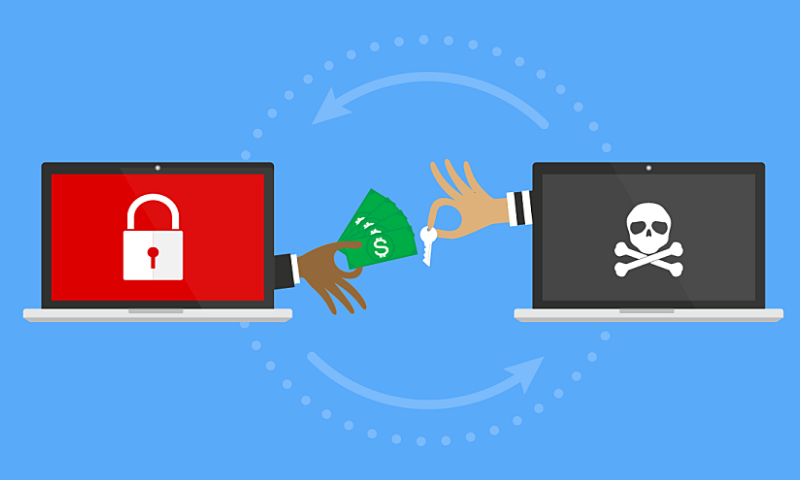Ransomware is a growing threat that can hold files hostage, demanding payment for their release. This type of malware often encrypts data, leaving victims searching for reliable decryption options. While a guaranteed solution may not always exist, there are several approaches to decrypt ransomware-encrypted files and prevent future attacks. Below, we’ll discuss these methods, alternatives to paying a ransom, and proactive steps to protect your data.
What is Ransomware Decryption?
Ransomware decryption is the process of restoring access to encrypted files without paying the ransom. After ransomware infects a system, it usually scrambles files with advanced encryption, requiring a unique key to unlock them. Although this decryption key is typically held by attackers, third-party decryption methods, tools, and techniques exist for certain strains of ransomware.
Steps to Follow When Facing Ransomware
If ransomware has compromised your data, consider these steps to approach decryption:
1. Isolate and Contain the Infection
As soon as ransomware is detected, disconnect all devices from the internet and shut down network connections. This helps stop the ransomware from spreading further. Preventing lateral movement (where the infection spreads to other systems) is critical for limiting data loss.
2. Identify the Ransomware Strain
Each ransomware variant operates with a unique encryption technique, so understanding the strain can clarify your options for decryption. Services like ID Ransomware let users upload encrypted files or ransom notes to identify the malware strain. The more common the strain, the higher the chance of finding a solution.
3. Explore Available Decryption Tools
Once you’ve identified the ransomware type, search for reputable decryption tools provided by cybersecurity experts. No More Ransom, a project supported by global law enforcement and tech companies, offers decryption tools for many ransomware families. If available, these tools can restore files without paying the ransom, making it an ideal first-line solution.
Common Alternatives to Decryption Keys
When no decryption tool is available, these alternative methods can help recover your files:
Restoring From Backup
Regularly updated backups are invaluable for recovering data post-ransomware attack. If your backups are offline or cloud-based, you can restore encrypted files without interacting with the attackers. Be sure to scan your backup files to ensure they are malware-free before reintegrating them into your system.
Using Shadow Copies
In some cases, ransomware doesn’t delete shadow copies of files. Shadow copies, stored by the operating system, can sometimes be used to restore files. Although newer ransomware variants may remove these backups, tools like ShadowExplorer can help recover files if they remain intact.
Seeking Professional Help
For complex ransomware infections, enlisting a cybersecurity professional might be your best option. Cybersecurity teams have the expertise and tools to analyze the ransomware’s impact, attempt decryption, and provide secure recovery advice. They may also have insights into strains or techniques that are not yet publicly available.
Preventing Future Ransomware Infections
Given ransomware’s prevalence, a strong prevention plan is essential. Here are several ways to help protect your data and systems from future ransomware attacks:
Regularly Update and Patch Software
Outdated software can provide ransomware with access points. By keeping operating systems, applications, and security software updated, you close many of these potential gaps.
Invest in Cybersecurity Training
Educating employees or family members about phishing scams and safe online behavior can reduce the risk of ransomware attacks. Many ransomware infections begin with phishing emails, so awareness training is a critical defense.
Utilize Strong Security Tools
Deploy comprehensive antivirus and anti-malware software to detect and block ransomware. Firewalls, intrusion prevention systems (IPS), and email filters are also valuable for detecting suspicious activity and blocking it before it reaches your network.
Isolate Backups
Ensure your backups are disconnected from your primary network or stored in secure cloud solutions that are ransomware-resistant. Network-attached storage (NAS) can be infected if left connected, so prioritize offline or isolated backups.
Risks of Paying the Ransom
Paying ransom might seem like a quick fix, but it poses significant risks:
- No Guarantee of Recovery: Attackers may not provide a working decryption key, even after payment. Many victims report receiving partial or faulty keys, leaving them without their data and out of pocket.
- Funding Future Attacks: Paying ransom supports ransomware operations, encouraging more attacks against others. These funds often go toward expanding cybercriminal networks.
- Potential Legal Complications: Some countries have strict regulations on paying ransoms, especially if the attackers are linked to sanctioned entities. This means paying could carry legal risks in certain situations.
What to Do If Decryption Fails
If all attempts at decryption fail, consider these final options:
- Report the Attack: Inform local authorities or cybersecurity agencies. Many regions have dedicated cybercrime divisions that track and investigate ransomware operations, and reporting can help thwart future attacks.
- Wait for Updates: New decryption tools are continually being developed as cybersecurity experts crack specific ransomware strains. Regularly check trusted sites like No More Ransom for updates.
- Rebuild Systems: In cases where data recovery isn’t feasible, wiping the infected systems and starting fresh may be necessary. Although this is a last resort, it ensures a clean environment for your devices moving forward.
Final Thoughts
Decrypting ransomware-encrypted data is challenging, and the solutions often depend on the specific strain of malware. By following a comprehensive security protocol, such as maintaining backups, updating software, and remaining vigilant against phishing, you can minimize the risk of infection and be better prepared if a ransomware attack occurs. Prevention and preparation are your strongest defenses against ransomware, and in the event of an infection, exploring every recovery option thoroughly can help you regain control without falling into the attacker’s hands.

